#coral lichen
Explore tagged Tumblr posts
Note
Do you prefer lichen composed of algae or cyanobacteria?
An extremely good question.
I enjoy both, however my favourite genus of lichen is the Cladonia genus, in which I am including both the Cladonia and Cladina morphotypes, which are lichens that primarily associate with algae. I love their little cups and horns, and some are quite beautiful. Related lichen such as Pulchrocladia sp. are also very very pretty and make me think of lacy dresses. I would love to see an outfit based off of P retipora.
Here are some photos I have of Cladonia sp.
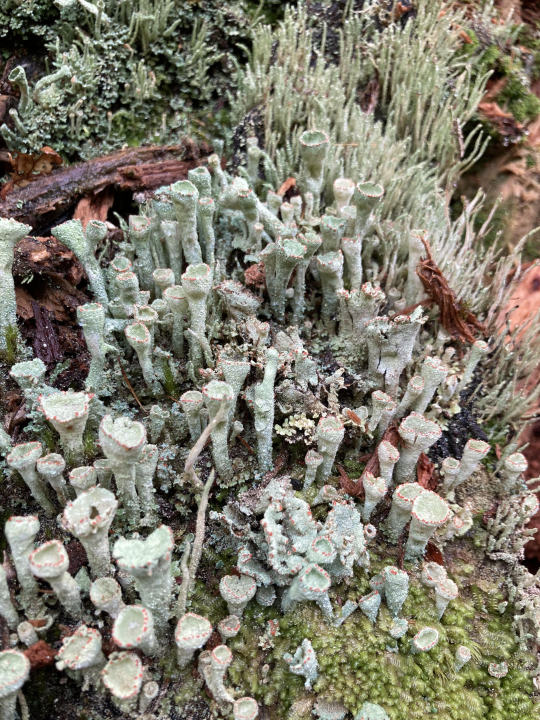
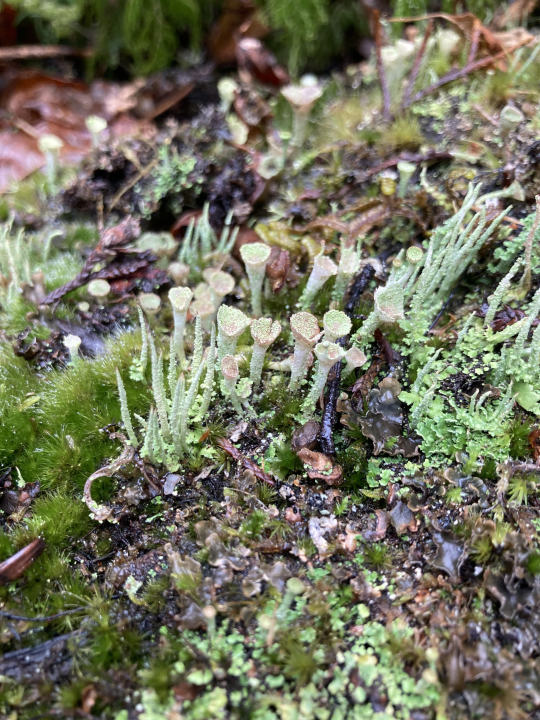
Cladonia sp. Cladonia morphotype. Note the singularly attached, un-branched cups and horns, growing from small wart like deposits on the ground.

Cladonia sp. Cladina morphotype. Highly branched with much thinner cups and horns. More moss-like.

Pulchrocladia rangifera, not in the Cladonia genus, in the same family. Possibly one of the prettiest lichens I have seen.
I do love cyanobacteria associated lichens such as the dog lichens found in the genus Peltigera, purely because they have such striking dark blue colourations, almost to the point of being black. See below a dog lichen I found as part of a trip collecting herbarium samples.

Fun fact, in the process of digging this lichen out of the rotting log it was on, the safety catch failed on the knife I was using and closed so heavily on my finger that it severe the nerves on the end of my index finger!
#thank you for the question anon! I love answering questions!#lichen#lichen photography#coral lichen#cladonia#cladina#peltigera#dog lichen#pixie cups#lichenology#inbox things
1 note
·
View note
Text
This was a level in Life Force.
#628 - Cladia sp. - Coral Lichen

A rather extraordinary lichen I saw growing on Sullivan Rock. It forms large hyberbolic fractal nets resembling piles of snow, in the middle of moss beds on the granite.
31 notes
·
View notes
Text
Lichen & Moss: unappreciated botanical beauties

#looks like a coral reef but in green#and you know#seeing as corals are animals that have taken in algea#and lichens are fungi-algea collaborations#maybe that's not such a bad comparison
92 notes
·
View notes
Text
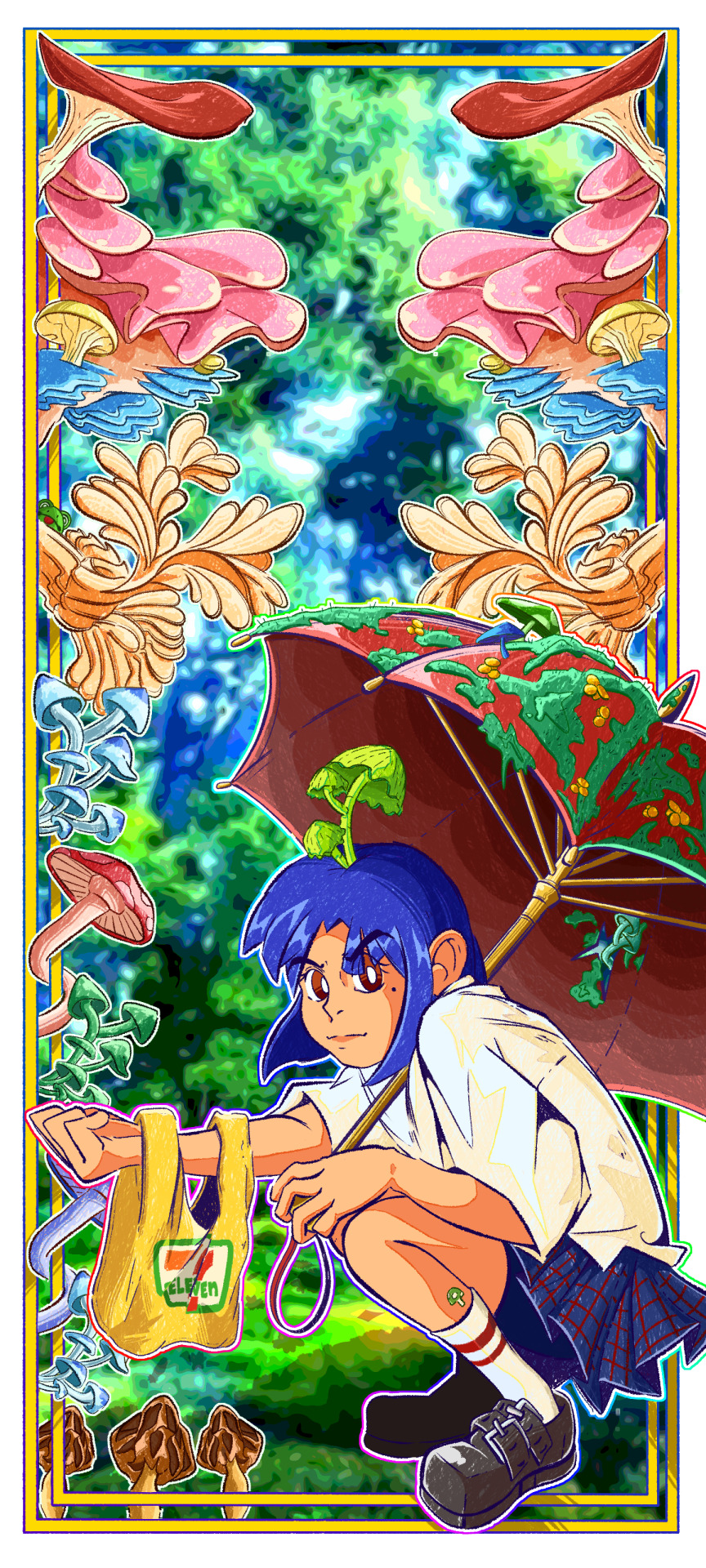
mushroom girl heading back home
#anime girl#anime#mushrooms#mycology#mycelium#phone wallpaper#anime wallpaper#forest wallpaper#7/11#japanese forest#mushroom art#umbrella#mario mushroom#fungi aesthetic#fungus#lichen#fungi#coral fungi#shelf fungi#mushroom photography#fantastic fungi
8 notes
·
View notes
Text
Elements And Their Correspondences
Earth
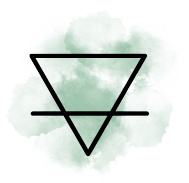
Direction: North
Time: Midnight
Season: Winter
Color: Green, brown
Zodiac: Taurus, Virgo, Capricorn
Ruling planets: Venus and Saturn
Tarot Cards: Pentacles, Coins
Tools: Pentacle, salt, stones, dirt, crystals, wood, flowers
Cystals: Emerald, Jet, tourmaline, quartz, onyx, azurite, amethyst, jasper, peridot, granite.
Animals: gopher, bear, wolf, ant, horse, stag, deer, dog, cow, bull, bison, snake, worms, moles, voles, grubs
Herbs: Oak, cedar, cypress, honeysuckle, ivy, primrose, sage, grains, patchouli, nuts, magnolia, comfrey, vetivert, moss, lilac, lichen, roots, barley, alfalfa, corn, rice.
Rules: Grounding, strength, healing, success, stability, sturdiness, steadfastness, foundations, empathy, fertility, death, rebirth, wisdom, nature, animals, plants, money, prosperity.
Water
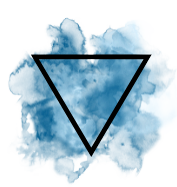
Direction: West
Time: Dusk
Season: Fall
Color: Blue, Indigo, Sliver
Zodiac: Cancer, Scorpio, Pisces
Ruling planets: Moon, Neptune, Pluto
Tarot Cards: Cups
Tools: Ocean, sea glass, cup, bowl, seaweed, hag stones, cauldron
Cystals: Moonstone, pearl, silver, aquamarine, amethyst, blue tourmaline, lapis lazuli, fluorite, coral, blue topaz, beryl, opal, coral
Animals: fish, snake, frog, crab, lobster, eel, shark, dragonfly, seahorse, dolphin, sea otter, seal, whale, alligator, crocodile, beaver, octopus, penguin, salamander, turtle, starfish, koi, coral, barnacle, manta ray, manatee, jellyfish, nautilus, heron, duck, geese, crane, swan, water birds, ammonite, dragons, serpents
Herbs: seaweed, aloe, fern, water lily, lotus, moss, willow, gardenia, apple, catnip, chamomile, cattail, lettuce, kelp, birch, cabbage, coconut, cucumber, comfrey, eucalyptus, gourd, geranium, grape, licorice, lilac, pear, strawberry, tomato
Rules: emotion, intuition, psychic abilities, love, unconscious mind, fertility, self-healing, reflection, lunar energy, deep feelings, curses, death
Fire
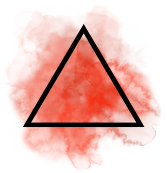
Direction: South
Time: Noon
Season: Summer
Color: Red, Orange
Zodiac: Aries, Leo, Sagittarius
Ruling planets: Sun, Mars
Tarot Cards: Wands or Swords (depends on belief system)
Tools: Athame, candles, swords, wands, dagger, lamp, flame
Cystals: Carnelian, red jasper, bloodstone, garnet, ruby, agate, rhodochrosite, gold, pyrite, brass, fire opal, lavastone, tiger's eye
Animals: Lion, snake, coyote, fox, ladybug, bee, shark, scorpion, horse, mantis, tiger
Herbs: Cinnamon, cloves, ginger, allspice, basil, cacti, marigold, chilis, garlic, mustard, nettle, onion, heliotrope, hibiscus, juniper, lime, orange, red pepper, poppies, thistle, coffee, jalapenos, lemon, cumin, saffron, coriander
Rules: Energy, will, destruction, strength, courage, power, passion, lust, sexuality, anger, war, new beginnings, protection, loyalty, transformation, action, movement, achievement, creativity, desire, willpower
Air
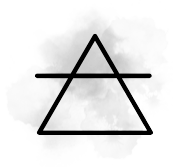
Direction: East
Time: Down
Season: Spring
Color: Yellow, gold, white, light blue, pastels
Zodiac: Gemini, Libra, Aquarius
Ruling planets: Mercury, Jupiter, Uranus
Tarot Cards: Wands
Tools: Feather, wand, staff, incense, broom, bell, sword, pen
Cystals: Amber, topaz, citrine, jasper, agate, pumice, alexandrite, amethyst, fluorite, mica, clear quartz
Animals: Birds, flying insects, spiders, bats
Herbs: Bergamot, lavender, marjoram, peppermint, sage, dandelion, bluebell, clover, frankincense, primrose, lemongrass, pine, aspen, yarrow, violets, vervain, myrrh, dill, anise, aspen
Rules: Intelligence, wisdom, knowledge, logic, thought, communication, truth, inspiration, intuition, memory, creativity
Tip jar
#thecupidwitch#witchcraft#witchblr#witchcore#witch community#witches#witch#grimoire#book of shadows#baby witch#beginner witch#witchy#pegan#peganism#chaos witch#magic#magick#wiccablr#wicca
811 notes
·
View notes
Text


















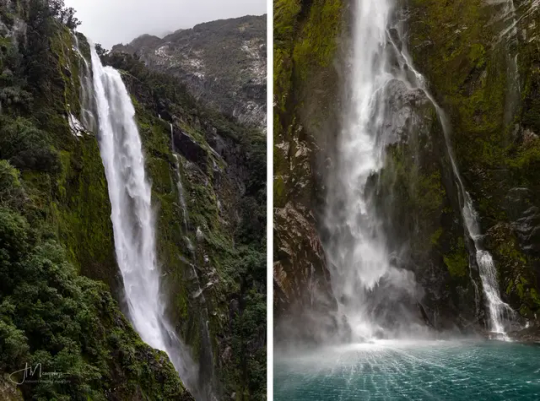






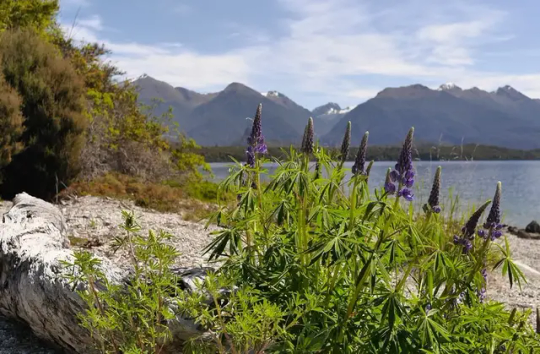




Милфорд Саунд (Milford Sound, маорийское название — Пиопиотахи (Piopiotahi)) – самый знаменитый фьорд в Новой Зеландии, известный на весь мир своей первозданной красотой. Милфорд Саунд, как и фьорды Северного полушария, сформировался в результате деятельности ледника 10-12 тысяч лет назад. Знаменитый английский путешественник и писатель Редьярд Киплинг побывал однажды на берег��х Милфорд Саунд и под впечатлением увиденного назвал этот фьорд восьмым чудом света.
Милфорд Саунд – это вытянутый залив с высокими скалистыми берегами шириной около 3 км, который вдается в сушу на целых 16 км, а максимальная его глубина 512 м. Со всех сторон он окружен горными вершинами, увенчанные вечными снегами, высотой более 1,5 км. Нетронутые человеком густые влажные леса растут здесь практически на отвесных скалах.
Милфорд Саунд - одно из самых влажных мест на Земле, здесь за год выпадает до 7000 мм осадков. Дождь идет каждый день и это сказывается на характере леса - гигантские деревья покрыты мхом и лианами, здесь растут лишайники и папоротники, лес очень влажный. Туристы могут рассчитывать на солнце в течение нескольких часов ближе к полудню, но во второй половине дня их наверняка настигнет ливень.
Интересный факт — В дождливые и бурные дни можно увидеть потрясающий природный феномен. Водопады, которые падают вверх. Это явление вызвано географическими особенностями Милфорд Саунда. При встрече с утесом сильный ветер часто поднимается вверх, и обычные водопады, попадая в поток воздуха, кардинально меняют свое направление.
Воды Милфорд Саунд населяет множество тюленей, пингвинов и дельфинов. Исследовательская станция Милфорд Дип позволяет ученым и туристам «заглянуть» в подводный мир. При таком изобилии мелких птиц невозможно обойтись без хищников: в глубине фьорда рассекают толщу воды многочисленные акулы. Также здесь можно увидеть уникальные коралловые рифы, в том числе и самые редкие виды - черные кораллы. Вода в Милфорд Саунд настолько прозрачная, что дно видно даже в самых глубоких местах, если, конечно, его не заслоняют густые водоросли.
Milford Sound (Maori name - Piopiotahi) is the most famous fjord in New Zealand, known throughout the world for its pristine beauty. Milford Sound, like the fjords of the Northern Hemisphere, was formed as a result of glacier activity 10-12 thousand years ago. The famous English traveler and writer Rudyard Kipling once visited the shores of Milford Sound and, impressed by what he saw, called this fjord the eighth wonder of the world.
Milford Sound is an elongated bay with high rocky shores about 3 km wide, which juts into the land for as much as 16 km, and its maximum depth is 512 m. On all sides it is surrounded by mountain peaks, crowned with eternal snow, more than 1.5 km high. Dense rainforests untouched by man grow here almost on sheer cliffs.
Milford Sound is one of the wettest places on Earth, with up to 7,000 mm of rainfall per year. It rains every day and this affects the character of the forest - giant trees are covered with moss and vines, lichens and ferns grow here, the forest is very humid. Tourists can expect sun for a few hours closer to midday, but in the afternoon they will probably be overtaken by a downpour.
Interesting fact - On rainy and stormy days, you can see an amazing natural phenomenon. Waterfalls that fall upwards. This phenomenon is caused by the geographical features of Milford Sound. When meeting a cliff, a strong wind often rises upwards, and ordinary waterfalls, getting into the air flow, radically change their direction.
The waters of Milford Sound are inhabited by many seals, penguins and dolphins. The Milford Deep research station allows scientists and tourists to "look" into the underwater world. With such an abundance of small birds, it is impossible to do without predators: in the depths of the fjord, numerous sharks cut through the water. Here you can also see unique coral reefs, including the rarest species - black corals. The water in Milford Sound is so transparent that the bottom is visible even in the deepest places, unless, of course, it is obscured by thick algae.
Источник: //mirsg.ru/ru/pages/milford-sound,//cattur.ru/australia-and-oceania/new-zealand/milford-saund.html,/australiantravelclub.ru /articles/milford_saund_i_paryashchie_vodopady.htm,/sunsetobsession.com/ru/milford-sound/,/mirsg.ru/ru/pages/milford-sound, /varlamov.ru/1250158.html,//wikiway.com/novaya-zelandiya/milford-saund/,vk.com/@greenfieldworld-novaya-zelandiya-fordlend-milford-saund.
#New Zealand#Milford Sound#nature#fjord#mountains#waterfalls#rain forests#fog#clouds#dolphins#seals#nature aesthetic#landscape photography#nature video#природа#Новая Зеландия#Милфорд Саунд#фьорд#пейзаж#горы#водопады#влажные леса#туман#дельфины#тюлени
201 notes
·
View notes
Note
Saw some great lichens today on a very high quality rock





Oh wow, that is a SUPER high quality rock. One of my favorites I can see there is the little coral-looking, yellow-orange, fruticose Sphaerophorus globosus. They make weird, sphere-like fruting bodies that bust open and release a powdery black spore mass!
154 notes
·
View notes
Text
Oh, that's so cool! I wonder if this similarity in environments, and thus similarity in types and distributions of native species, has to do with their similar tectonics histories as well as their similar latitudes!
The west coast of South America is largely an active convergent plate boundary, where the Nazca plate is subducting under the South American plate and forming the Andes mountain range as a volcanic arc right along the coast [1].
Similarly, a good stretch of the northern part of the west cost of North American is an active subduction zone where the Juan de Fuca plate is subducting under the North American plate and forming the Cascades mountain range [2], extending from northern California to southern British Columbia. Until fairly recently in geological time, all (or almost all) of the western North American plate boundary was an active subduction zone (responsible in large part for much of the mountain building which occurred in western North America since the breakup of Pangea). This was when the Juan de Fuca, Explorer, Gorda, Cocos, and Nazca plates were apparently part of one large plate, referred to as the Farallon plate, which has since largely subducted and left only small fragments [3]. Much of the North American western plate boundary is now a transform boundary with the Pacific plate, so much less mountain building is occurring today, but we still have topography that reflects this history quite dramatically as the moutains weather away.
So we see narrow corridors bounded by deep seas on one side, tall young, volcanically active mountains on the other, and similar climates as a function of latitude, perfect conditions for forming geographically isolated regions with lots of precipitation on the coastal sides of the ranges at appropriate latitudes and (geologically) fresh nutrients from weathering of rocks in said ranges. Pretty good environment for speciation, I'd reckon!
I honestly hadn't thought much about the way the similarity between the regions tectonically might interact with their biological and ecological similarity, but it's really cool to think about!
[1]: https://en.wikipedia.org/wiki/Andes
[2]: https://en.wikipedia.org/wiki/Cascadia_subduction_zone
[3]: https://en.wikipedia.org/wiki/Farallon_Plate
About the unique ecosystems in narrow corridors along the Pacific coast, and the mirroring of California and Chile:

Really cool how the (arbitrary political) borders of Chile host a total of about 60 amphibian species, but 37 of them are endemic species, all living only within about 100 kilometers of the Pacific coast. “Chile” hosts about 130 reptile species, of which an incredible 81 are endemic, living nowhere else.
Both temperate rainforest and Mediterranean chaparral are rare ecosystems on Earth, and both biomes have relatively mild winter climates comfortable for cold-blooded amphibians and reptiles.
Here you can see amphibian biodiversity is highest in the Valdivian temperate rainforest, while reptile diversity is highest in the Mediterranean chaparral zone.


Here’s the Valdivian temperate rainforest and Mediterranean chaparral zones, just for comparison to the amphibian and reptile zones of biodiversity.

Compare to the distribution of rainforest and chaparral in coastal North America:

Not coincidentally, California has a similarly high rate of reptile and amphibian endemism and biodiversity.
Even when limited to narrow corridors, temperate rainforest and Mediterranean chaparral still host a surprising amount of unique lifeforms.
Check out California:

Here’s a look at the distribution range of slender salamanders (Batrachoseps) in California. In the Mediterranean-climate zone of California, there are 23 species of slender salamander, of which about 22 are endemic.


Chile and California are essentially mirrored images of each other at similar latitudes; both center on climatically-mild west-coast temperate rainforest and Mediterranean chaparral biomes.
Temperate rainforest biome and Mediterranean-climate chaparral biome are both rare on the planet:



Here’s both the California coast and the Chilean coast recognized as global biodiversity hotspots.

#I love the chaparral and the coastal redwoods#I just wish I weren't constantly dying from the heat >.>#I am a polar creature and do not belong here#I resonate with the greenland shark and the polar coral reefs#Cold is good you just have to take things slow#My home mountains will always be the Sierra Nevada range though#Glacier carved granite#simultaneously ancient and newborn#alternately cold and sharp as a steel razor and as warm and soft as lichen covered granite in the noonday sun#I miss them >.>
323 notes
·
View notes
Text

The embroidery collection on my pyjama sleeve has been growing again this morning. I really must do some of the ones that look like lichen. This reminds me a little of a coral reef.
One thing you become really aware of when you start mending is your body’s preferences: which knee you rest your weight on; which side you sleep on; whether you walk on the heel of your foot or the ball. It’s all recorded in the fabric.
85 notes
·
View notes
Text
Increasing complexity in evolution
Over the history of life there have been many occasions in which new complex systems developed from earlier, simpler ones, leading to explosion in diversity as the new system fills niches that it can exploit better than the old. Some examples are the formation of the first prokaryotic cells from looser collections of genes and membranes, the origin of eukaryotic cells from prokaryotic ancestors, the development of sexual reproduction, the origin of multicellular animals and plants, and the appearance of animal colonies or societies and of complex symbiotic relations.
There are two main types of such complexity transitions, which can be labelled "egalitarian" and "fraternal".
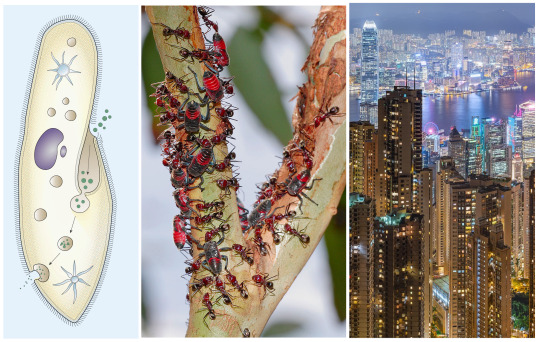
Egalitarian transitions involve the union and cooperation of entities with different origins and abilities. Examples are the combination of self-replicating genes into the coherent genomes of the earliest cells; bacteria and archaea coming together to form eukaryotic cells with mitochondria and sometimes chloroplasts; the origin of societies with non-kin members; mutualist symbiosis between different species, as in lichens; and possibly the union of partners in sexual reproduction.
The defining trait of an egalitarian transition is that the different units are genetically diverse, and therefore must all reproduce on their own: if they didn't all pass on their genes, they wouldn't stay part of the relationship. Even today, in our cells, mitochondria replicate independently of the nucleus. That also means the different units are in competition with each other.
Sure, in the long term cooperation may be best for all: the main driver of egalitarian transitions is cooperation between elements with different "skills", such as the photosynthesis of algae and the talent for nutrient mining of fungi in lichens. But evolution doesn't really do "long term". If an element can replicate itself more by mooching off the others, the mooching variant will become more numerous than the self-effacing variant.
Therefore, the way these transitions occur is by enforcing mutual dependence, for example by enclosure and by synchronized reproduction. When proto-genes were first enclosed by proto-membranes to form proto-cells, they were all in the same boat: any cheater mutant would quickly destroy itself by destroying its own sustainance. Parasites often become beneficial symbionts when they cannot easily jump to a new host, and viruses may become less deadly over time.
The interdependence can be enforced further by exchanging genes: mitochondria and chloroplasts turned over many essential genes to the nucleus of their host cell, and though they can reproduce on their own, they cannot survive for long. Also, mitochondria are only ever passed by the mother's eggs, not by the father's sperm, preventing the zygote from becoming a battleground (in algae, mitochondria always come from one parent, and chloroplasts from the other).
When all goes well, the result of an egalitarian transition is a cell or a society, or a small ecosystem built from cooperating interdependent parts that function as a whole.

In fraternal transitions, in contrast, the units all share the same origin and nature. Examples are the evolution of clonal colonies (e.g. of trees or coral polyps), eusocial colonies (think ants, bees, or naked mole rats), and the origin of animals, plants, and fungi with multicellular bodies. The main benefit here is not complementary skills, but economy of scale: when mole rats dig for tubers, they gain more by sharing the rare but abundant finds than by each digging on their own (and going hungry most of the time).
One major difference from the other type is that all the members of the greater unit are genetically identical, or nearly so: therefore, they do not all need to reproduce (from the POV of my genes, it makes no difference at all whether I or my identical twin have children: any gene I have, they will pass on just as well). Indeed, the disposability of most elements is a selling point of this kind of transition.
But you know who cannot say the same? Cheater mutants -- cancer, if you will. Any cancerous mutation, by virtue of being new, cannot count on being transmitted by other units, and benefits from replicating itself on expense of other genes. The uniform terrain will give it plenty of fertile soil.
An excellent way to put a stop to that is to limit reproduction to few units: think of the egg and sperm cells of animals, or ant queens. First of all, these segregated reproductive units can be kept in conditions that favor a low mutation rate, for example slow metabolism and protection from light. Most importantly, they put a bottleneck through which all mutations must pass: if a cancerous mutation occurs in (say) digestive tissue, that's regrettable, but it won't be passed down to the offspring; but if it happens in the germinal line, well, the new offspring will be entirely composed of cancerous cells, and the bad mutation once again destroys itself. Reproductive segregation resets genetic uniformity in each generation.
Genetic uniformity does not mean morphological or functional uniformity: thanks to contextual gene activation, the cells in your brain, bones, liver, and heart all have the exact same genes, but very different structures and functions. When all goes well, fraternal transitions may end with the constituent units specializing for different functions, taking on some of the advantage of the egalitarian transition, while still keeping genetic diversity as low as possible.
And that's how you go from bacteria to humanity, more or less.
56 notes
·
View notes
Text

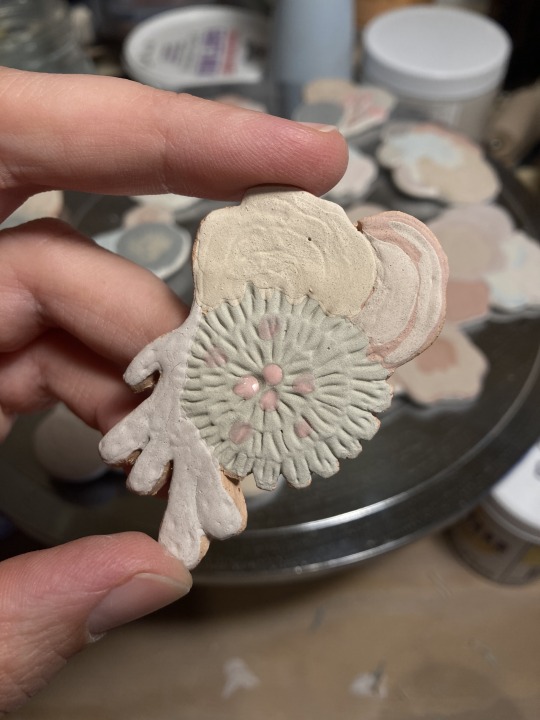
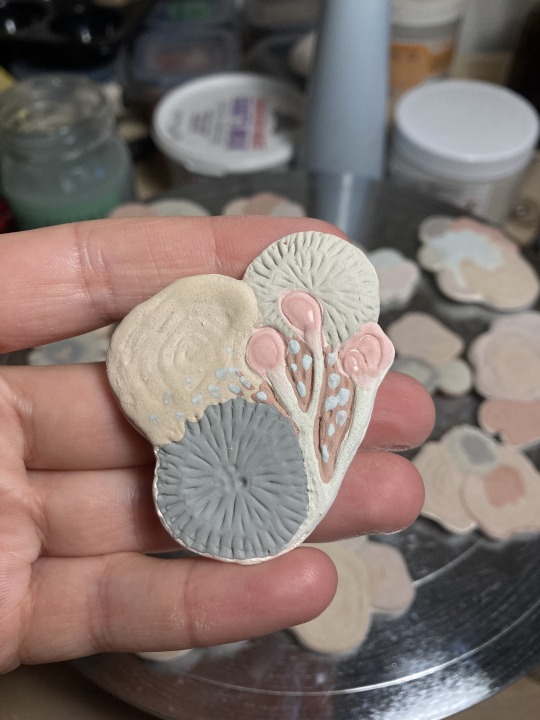

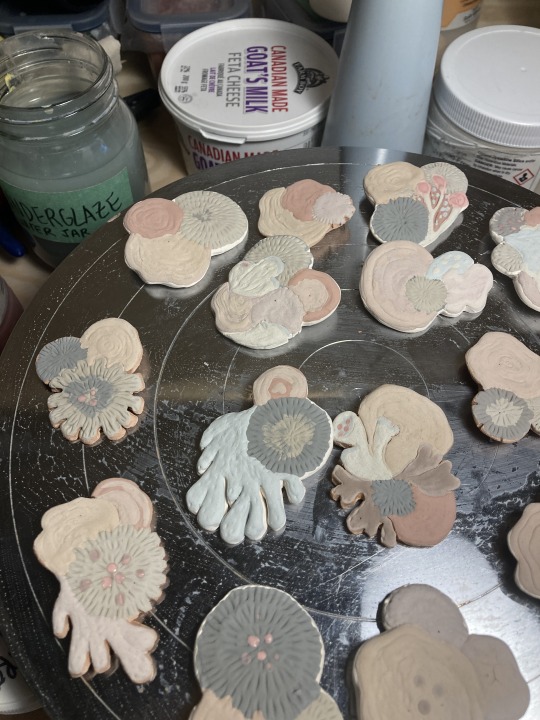
I'm powering through this glazing round now that the more intricate mug designs are done - these lichen pendants were quicker than expected to glaze & I'm SO curious to see how they turn out once fired...I did some real experimenting with layering/butting-up glazes beside each other & I'm hoping it's neat!
Glazes used include a bunch from my two Coyote sample sets (Enduro colour glazes & cone 6 Shinos) plus a few from the Mayco 2023 new glaze sample set (ivy, riptide, coral gloss & fossil rock). I took pretty-ok notes, so I'll post these again once they're fired with some annotation, as they'll probably be the most interesting glaze pieces from this whole batch!
#artblog#ceramicsculpture#ceramicart#handbuiltceramics#sculptures#handbuiltsculpture#pottery#clay#stoneware#sculpting#sculpture#handbuilding#ceramic#ceramics#glazing#mayco#coyote glaze#ceramic pendant#pendant#handmade pendant
167 notes
·
View notes
Text
Not to be edgy or start anything, but what is the best word to get to say when you are describing the texture of lichens to your friends?
16 notes
·
View notes
Text
Weird question, but is there a reason lichen are considered composite organisms (of fungus and algae) rather then a single species, but animals with algae in their tissue like coral or those sea slugs tend not to be.
118 notes
·
View notes
Text
top organisms id like to be reincarnated as:
Welwitschia mirabilis
lichen growing on a wooden fence post
a diatom of some sort
purple coral fungus
a tulip tree
that one weird huge box jellyfish with the spots that has only been caught on film once
41 notes
·
View notes
Text
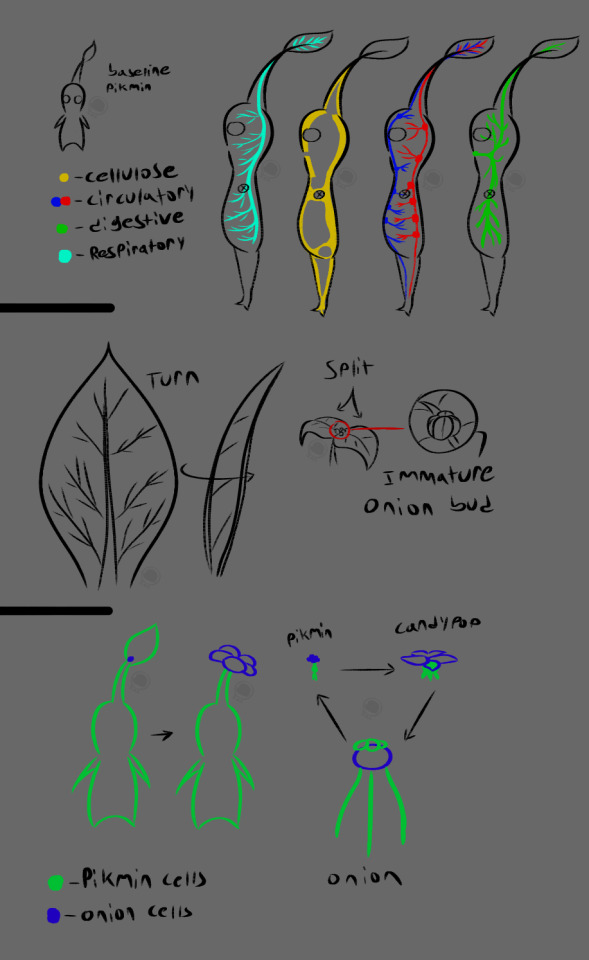
now that im finally starting to feel better heres some of my thoughts on some spec biology of pikmin i see pikmin and onions as separate species that are so close they cannot function if separated, like corals, lichens and algae.
101 notes
·
View notes
Text

Tuckerman's coral lichen
#lichen#forest#nature#beauty#photographers on tumblr#artists on tumblr#original photographers#original photography#photography#aesthetic#Washington#pnw#westcoastbestcoast#art#vsco#pacific northwest#explore#travel#cottagecore#naturecore#grandmacore#p
74 notes
·
View notes